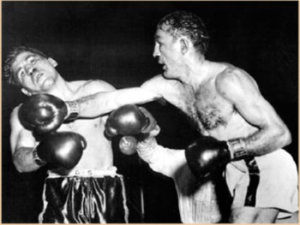Foreclosure process and purchasing windows:
There are several windows of opportunity in which to purchase a good deal. Explaining the foreclosure process will help you in determining when to buy or wait for another buying window. The windows are: Resale, Short Sale, Foreclosure Auction, Offer Direct to Bank or finally REO (bank owned).
Resale:
This is the first window of opportunity. When an owner needs to sell, they will call a Realtor to list their home. The Realtor will do an analysis to determine what price the market will bear. Depending on the price and the motivation of the seller, this could be the best opportunity. The resale deal will be the cleanest deal with title insurance and a buyer and seller agreement to inspection items. However, if the home owner owes more than what the home is worth or they are behind in their payments they will commit to a short sale.
Short Sale:
AKA: Long Sale. (The second window of opportunity) Do not confuse this with a short purchasing window. It simply means that the seller will request that their bank take a short payoff. Typically, a price that you see on a short sale listing will be a price pulled out of the air by a Realtor. The Realtor must obtain an offer in which to submit to the seller’s lender. If the price matches all the other home comparables in the neighborhood, it will be harder to obtain an offer. The easiest way to get a quick offer is to lower the price below anything else in the market. Once the offer is obtained and submitted to the lender, the lender will go through a due diligence phase. This consists of a bank appointed negotiator who hires other realtors to complete broker price opinions (BPO’s) and/or an appraisal. The negotiator also requires all financial documents from the seller to verify whether or not the seller is in a hardship situation. Purchasing good deals in a short sale position can yield good results; however, the waiting period for a bank to make a decision can take up to a year. Even after waiting 6 months, the bank could come back and deny the sale or ask the seller for more money. There are many ways for this deal to collapse. The key to purchasing short sales is to not let your emotions get ahead of you. Be patient.
Foreclosure Auction:
(The third window of opportunity) Once a home owner has not made their payments for many months, the lender files a notice of election and demand (NED) with the county Public Trustees office. The notice to foreclose is then posted in public newspapers to notify the public of the up and coming foreclosure. On the date of the foreclosure, the lender will place a bid on the property to the Public Trustee. This bid typically is the amount in which is owed to the lender. This amount will include interest, late fees, attorney fees, taxes, etc. This is the full dollar amount in which the lender legally has rights to collect. However, the lender does not have to post the full amount. If the lender wishes to bid less, they can write off a deficiency amount. Sometimes the lenders amount can be .40 cents on the dollar. Not all lenders will take a deficiency, but sometimes, the greatest deal comes around. Drawbacks to this buying opportunity are as follows:
1) No one knows what the lender will bid until about 20 hours before the sale.
2) You may not be able to see inside the property or may have to evict the owner living in the property after foreclosure. (30-45 day process)
3) There is no title insurance issued on the property. The property may be subject to liens and judgments.
4) The property must be purchased with cash at the sale.
5) Junior lien holders can redeem your interest, thus owning the property for your purchase price plus interest and fees.
Despite the disadvantages, a great option if you have cash. In this case, cash is king!
Direct to Bank:
(The fourth window of opportunity) This is a very narrow window of opportunity. In many cases, the bank will not even talk to you. However, in some cases, we can offer on a property after the foreclosure sale through the banks attorneys.
REO (bank owned)
(Final window of opportunity) This is the next best opportunity to the resale option. After the bank has taken control of the property and no buyer purchased it during the first 4 windows, the lender will list the home with a local Realtor who represents the banks interest. The property is sold in as is condition, but just because it is a foreclosure doesn’t mean that it is in bad shape. The lender will give you a 7-14 day inspection period to verify the properties condition.
The lender will also issue title insurance to guarantee free and clear title. This insures that all liens and judgments will be cleaned from the title. The bank will typically price the home aggressively in which to sell within a 60 day period. However it is not always the case. Not all foreclosures are good deals but you are only looking for the gems!





